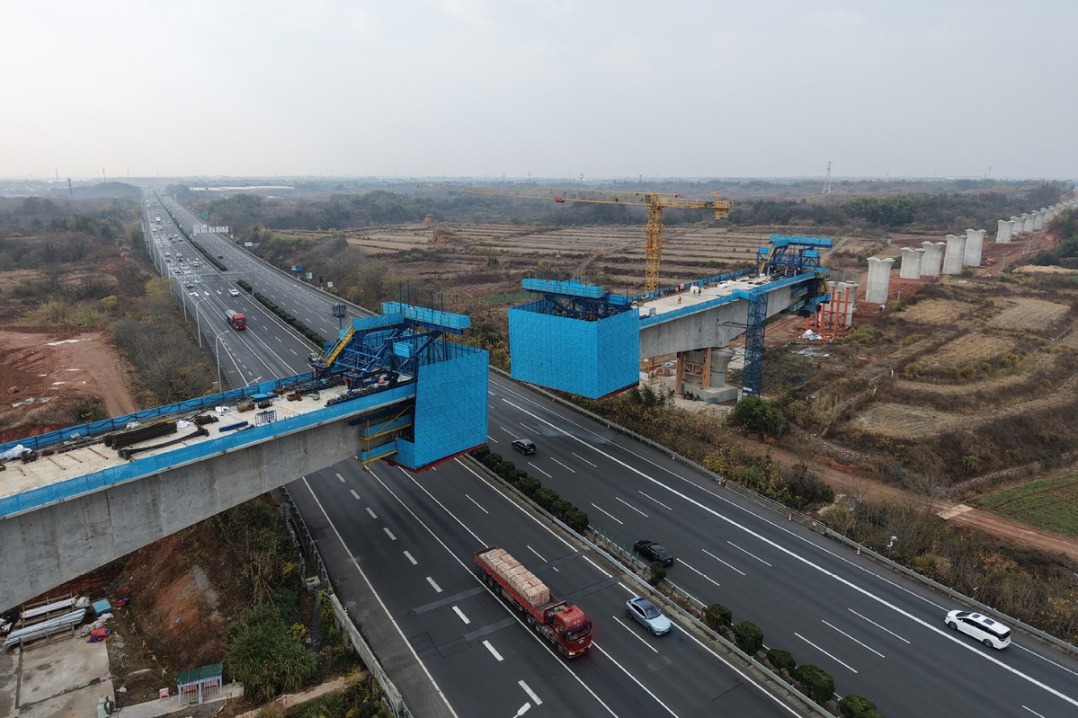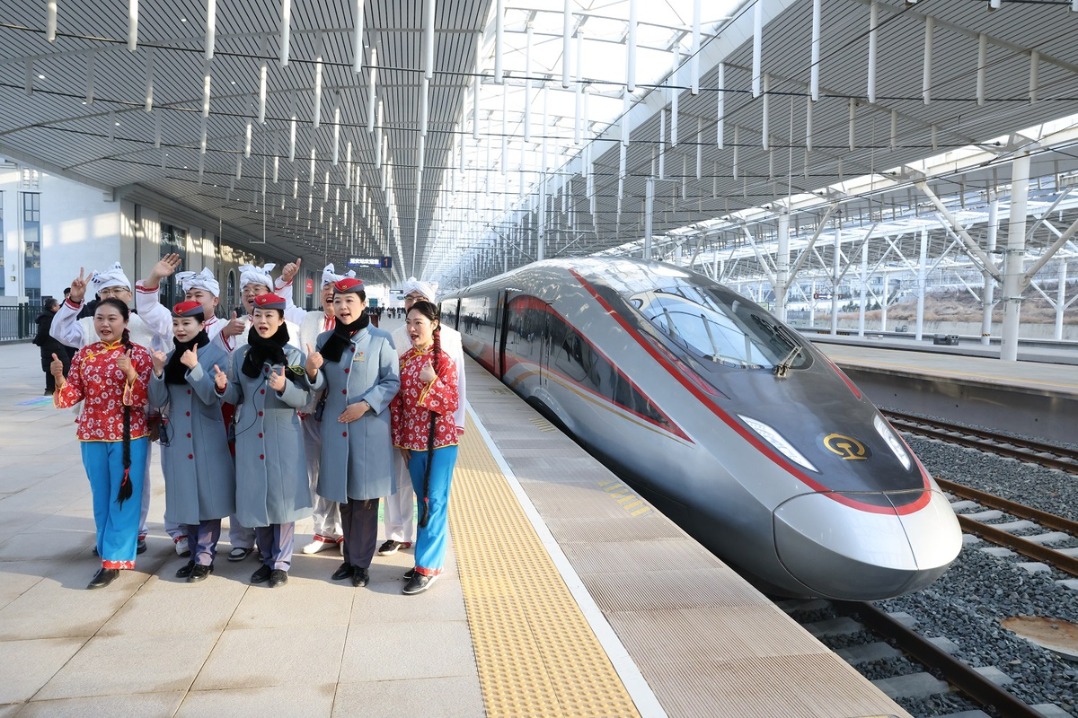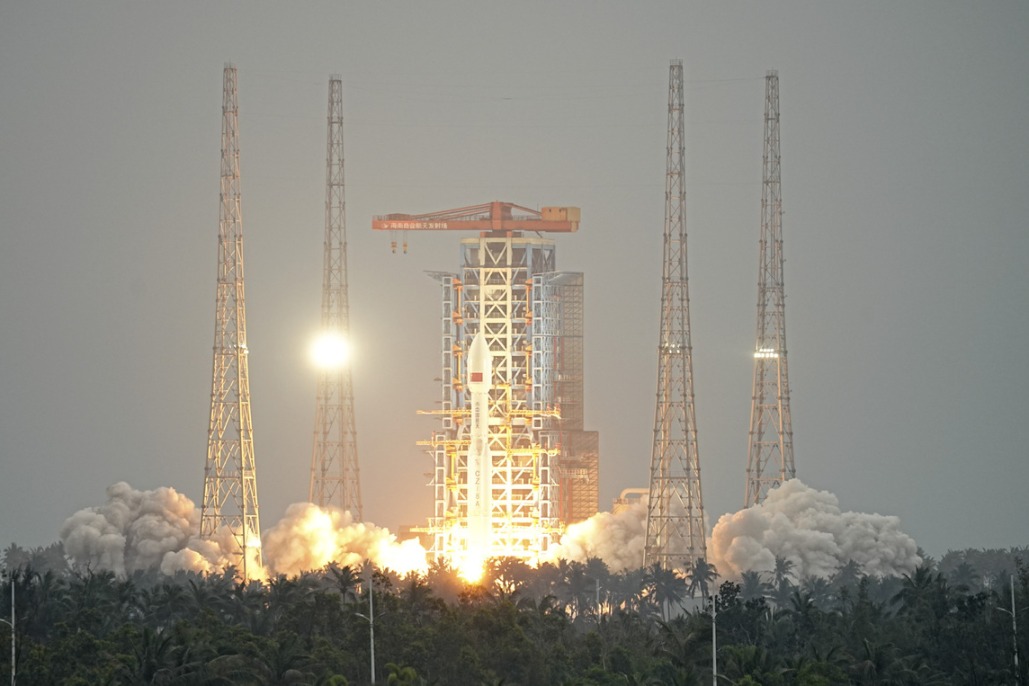Engineers test parachute system on rocket

Engineers at the China Academy of Launch Vehicle Technology in Beijing recently tested a parachute-controlled descent system on a rocket that will help reduce safety risks and evacuation costs after a launch mission.
Rocket debris falling from skies has been a source of concern to those located under its trajectory path, and local authorities sometimes need to evacuate residents before launches to avoid possible hazards.
To solve this problem, rocket scientists and engineers have been exploring multiple methods in hopes of controlling the descent of rocket debris. The latest solution is a controllable parachute system, which was tested through a Long March 3B rocket launch on May 17.
Installed on one of the rocket's side boosters, the system was activated at a certain altitude after the booster was used and separated from the rocket's core stage.
It successfully guided the used booster to descend on a planned path and eventually land within a designated area, according to the academy.
Zhang Yipu, a chief structural designer of the Long March 3 rocket fleet, said the parachute system features a host of advanced devices, including a large, controllable parafoil and an integrated navigation and positioning system for rapid movement.
Before the parachute system, engineers at the China Academy of Launch Vehicle Technology had carried out two tests of a controllable descent system through two Long March 2C rocket launches.
- Beijing community leads the way in grassroots governance
- HKSAR govt extends thanks to various units for supporting people affected by residential complex fire
- Influencers barred from vulgar, false, or harmful content
- Hangzhou–Quzhou High-Speed Railway begins operations
- China records rise in survival prospects for child and adolescent cancer patients
- Ministry unveils draft revision of the national air quality standards





































